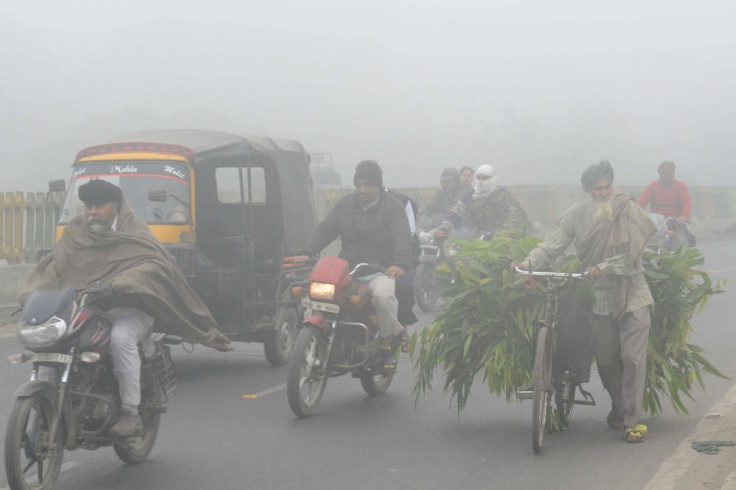As China scales back, India set to become the world's largest emitter of toxic sulfur dioxide
Around 33 million Indians live in areas with substantial sulphur dioxide pollution – a number which has doubled since 2013.

As India continues to battle severe air pollution, a recent study conducted by a group of researchers from Nasa and the University of Maryland has revealed another concern for people living in the country. Over the last 10 years, India's sulphur dioxide (SO2) emissions have spiked by 50% and the country could soon become the world's largest emitter of the toxic air pollutant.
Sulphur dioxide leads to the formation of acid rain and sulphate aerosols, which is a major contributor to the haze that has been affecting India's capital New Delhi and other parts of north India. It can cause severe respiratory and cardiovascular problems, and is responsible for more than one million premature deaths every year.
Though sulphur dioxide alone is not responsible for poor air quality, the gas – which contributed significantly to the 1952 London smog crisis that killed more than 4,000 people and hospitalised over 150,000 – has harmful effects if produced in high concentrations.
Sulphur dioxide is naturally produced by volcanoes, while humans tend to release it into the atmosphere by burning fuels – coal, oil and gases containing sulphur – and by smelting metals like copper, zinc, lead and nickel.
India, which became the world's second largest SO2 emitter behind China in 2010, has been releasing the harmful pollutant by mostly burning coal – which contains about 3% of sulphur – to generate electricity. The country produces more than 70% of its electricity from coal.
To be precise, last year, about 575 million tonnes of coal was consumed by Indian power plants. At this rate, as the Nasa and University of Maryland study suggests, the country will soon overtake China, which is currently the largest emitter of sulphur dioxide in the world.
In India, around 33 million people live in areas with substantial sulphur dioxide pollution – a number which has doubled since 2013, from 13 million, and could see a further increase as the demand for electricity rises in the country.
So how does India tackle this rise in SO2 emissions?
Perhaps by learning a lesson or two from China. Despite struggling with poor air quality, the country has managed to reduce SO2 emissions by 75% over the last 10 years. The whopping decrease has come about after the implementation of strict control measures.
In the last 10 years, China has not only fined polluters but has also reduced emission limits in a bid to reduce the burning of coal. According to a report in Quartz, the country has built efficient power plants with emission-reduction standards, asked steel producers to reduce coking coal production, and is also planning to heat millions of homes with natural gas this winter in order to reduce coal consumption as much as possible.

"Sulphur dioxide levels in China declined dramatically even though coal usage increased by approximately 50% and electricity generation grew by over 100%," explained Can Li, lead author of the study. "This suggests that much of the reduction is coming from controlling emissions."
India, on the other hand, has hardly taken any such steps to reduce sulphur dioxide emissions. "India's failure to implement emission control standards for coal-fired power plants is leading to severe air pollution levels," Aishwarya Sudhir, an air quality researcher who was not involved in the study, told IndiaSpend.
Sudhir also noted that the capital of the country has as many as 13 coal-fired power plants within a radius of 300km, but that no major emission control measures are in place – neither for SO2 nor for other pollutants that contribute towards poor air quality.
That said, in order to bring sulphur dioxide levels down, India has to implement strict regulations and policies to keep coal-fired power plants in industrial zones under check.
Other steps could include countrywide emission-monitoring stations, switching to other sources of energy and installation of pollution abatement equipment in thermal power plants, such as flue-gas particulate collectors, flue-gas desulphurisation units and nitrogen oxide control devices.
As of 2016, only 10% of Indian power plants incorporated such technologies, compared to 95% in China, as per IndiaSpend.





















